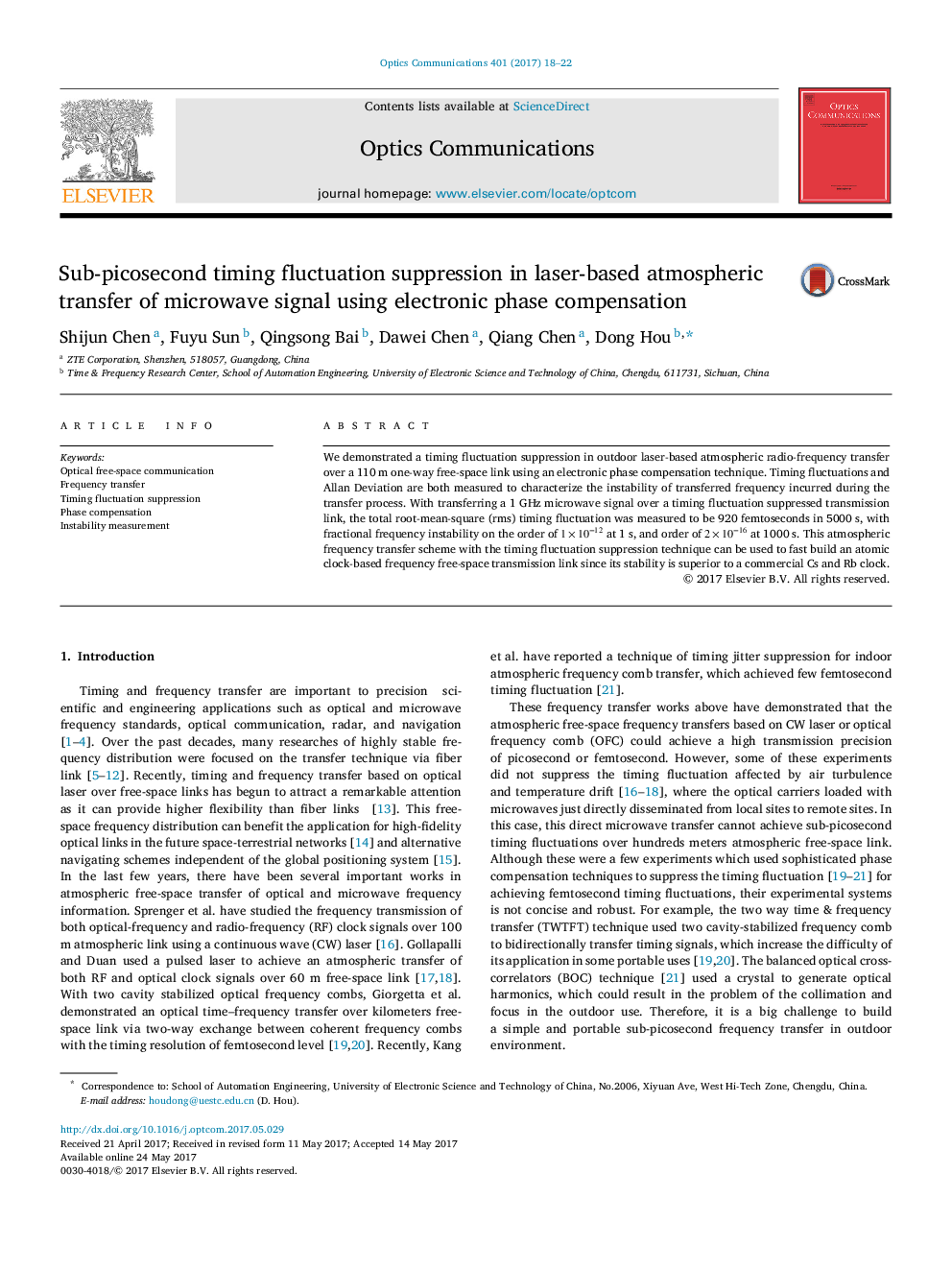| Article ID | Journal | Published Year | Pages | File Type |
|---|---|---|---|---|
| 5449296 | Optics Communications | 2017 | 5 Pages |
Abstract
We demonstrated a timing fluctuation suppression in outdoor laser-based atmospheric radio-frequency transfer over a 110 m one-way free-space link using an electronic phase compensation technique. Timing fluctuations and Allan Deviation are both measured to characterize the instability of transferred frequency incurred during the transfer process. With transferring a 1Â GHz microwave signal over a timing fluctuation suppressed transmission link, the total root-mean-square (rms) timing fluctuation was measured to be 920 femtoseconds in 5000 s, with fractional frequency instability on the order of 1Ã10â12 at 1 s, and order of 2Ã10â16 at 1000 s. This atmospheric frequency transfer scheme with the timing fluctuation suppression technique can be used to fast build an atomic clock-based frequency free-space transmission link since its stability is superior to a commercial Cs and Rb clock.
Keywords
Related Topics
Physical Sciences and Engineering
Materials Science
Electronic, Optical and Magnetic Materials
Authors
Shijun Chen, Fuyu Sun, Qingsong Bai, Dawei Chen, Qiang Chen, Dong Hou,
